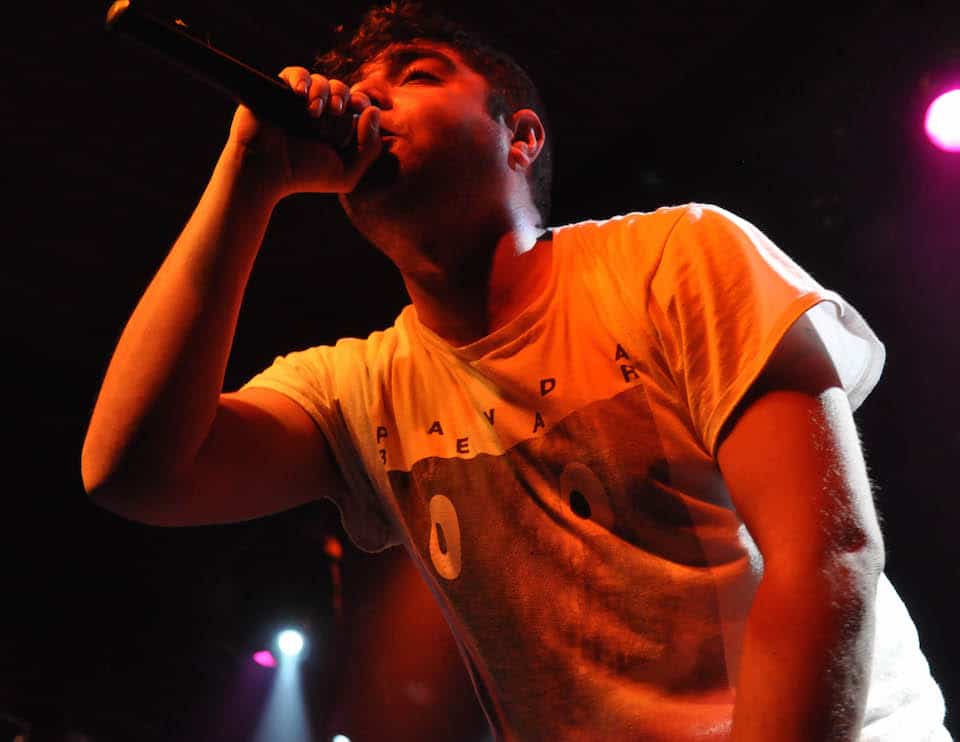Amidst the clutter and commotion of a typical NXNE crowd at The Drake Underground the evening’s performer – a rapper named Heems – quietly emerges from the crowd. “I’m going to start the show now,” he tells us, with his deadpan humour. The crowd laughs.
Standing alone in front of a devoted audience, the stage is clear except for Heems and his iPod. His cursory interaction with the crowd is all intended to add to the performance’s laid-back atmosphere.
“You grow more comfortable with [crowds] over time,” he tells me over the phone. “With this tour, it depends on where I am as a person, and where I am in the world…at times [performing] can make you really anxious, and at times you’ll get off the stage feeling great.”
Go back four years, and the chances of having even a mildly coherent interview with Heems would be highly unlikely. The New York-based rapper, formally named Himanshu Suri, was previously one of the founding fathers of the wildly outlandish punk-rap group, Das Racist. Paired with two other equally excitable MC’s, the span of Das Racist’s brief career could accurately be described as one long, drug-fueled bender. Known for showing up to shows completely wasted, their infamous Toronto concert had the group missing a member for the first fifteen minutes, who, as Heems confesses to me, turned out to be asleep at the hotel while the group was taking the stage. They didn’t even notice until they were onstage that someone was missing.
Fast-forward four years, and you have an entirely reformed artist. Battling depression, substance abuse, and a high-strung anxiety caused by the prevalent xenophobia that haunted New York post-9/11, Heems moved to India to rid himself of his demons. Embarking on a solo career, he released his most recent project Eat, Pray, Thug back in March — an album that focuses on mental illness and the overt racism that Brown-skinned people like himself face in America.
“[The album is] about the things I went through, and about growing up in New York City,” says Heems. “At times it’s about gentrification, and at times it’s about Hinduism. So the album is heavy on a bunch of themes, 9/11 being one of the heaviest.”
Das Racist’s primary virtue, among other things, was their ability to address the problem of institutionalized racism with a tongue-in-cheek humour — the true meaning of the song buried beneath a barrage of jovial lyrics — but for Heems, these charades are over. His humour remains, but it’s grown dark, and purposely lacks the playful attitude that preceded it.
On the one hand, the change is a sign of Heems growing up — he’s 29 years old, a political activist, and the occasional lecturer at various colleges — but the primary reason for this newfound severity is something he links to a kind of “urgency” that was not there before.
“[In Das Racist,] the humour was a tool. Langston Hughes wrote ‘laughing to keep from crying’, so that was essentially what we were doing. I think as I’ve grown up I’ve gotten a bit more serious, and I think it’s reflected in the music where my attitude is a little more urgent. I think laughing wasn’t working at some point, so having tried that more humorous approach to dealing with racism, I think I’m at a place in my life where I’d prefer to tackle it head on.”
Heems is a key of someone who’s been gradually worn down as the years begin to take their toll. That’s not to say that the quality of his music has lessened in any way; in fact, with each album the rapper becomes increasingly introspective – each song a new testament to his distinct and complex personality. But the rapper who was once the boisterous life of the party has since become the quiet, a distractingly somber deviation from his former self.
Being one of few South-Asian rappers in the popular music industry in North America, Heems is one of the sole representatives of his community, and actively draws attention to the widespread racism that is commonplace within his own country. In the aftermath of Osama Bin Laden’s death, Suri gathered and retweeted racist tweets in order to draw attention to the nation’s problem with xenophobia and Islamophobia.
“I’m fine with being a voice for my community; that’s what I wanted,” he says. “As south Asians become more visible as Americans and in popular culture, I thought it was important to still advocate for civil rights and be about something of political substance and actual change.”
But Heems, with a trace of the deadpan humour that first brought him to fame, is quick to remind me that he does not solely base his art around representing the Indian-American community.
“I’m an artist and xenophobia is only one of the things I rap about; but as an artist, I also rap about, like, four other things.”


